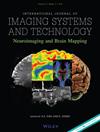一种有效的心室分割深度学习算法
IF 3
4区 计算机科学
Q2 ENGINEERING, ELECTRICAL & ELECTRONIC
引用次数: 0
摘要
为了有效诊断心血管疾病(CVD),必须检查心脏的解剖特征,这取决于分割感兴趣的心脏组织,然后将其分为适当的病理组。近年来,基于深度学习(DL)的计算机辅助设计(CAD)分割已被用于自动化分割过程。尽管有几种DL方法的发展,但由于患者心脏的形状变化和有限的数据可用性,它们仍然失败了。本文提出了一种有效的基于显著性和主动轮廓的注意力UNet3+算法来分割心室,这对大多数研究人员来说是一项具有挑战性的任务,尤其是对于随着心时相变化的形状不规则的右心室(RV)。该算法在DC度量方面优于其他最先进的方法,证明了其在自动分割过程中的效率。本文章由计算机程序翻译,如有差异,请以英文原文为准。
An efficient deep learning algorithm for the segmentation of cardiac ventricles
For the effective diagnosis of cardio vascular disease (CVD), anatomical characteristics of the heart must be examined, which depends on segmenting the cardiac tissues of interest and then classifying them into appropriate pathological groups. In recent years, deep learning (DL)‐based computer aided design (CAD) segmentation has been employed to automate the segmentation process. Despite the evolution of several DL methods, they still fail due to the shape variation of the heart in patients and the availability of a limited amount of data. This paper proposes an effective Saliency and Active Contour‐based Attention UNet3+ algorithm to segment the ventricles of the heart, which is a challenging task for most researchers, especially with an irregularly shaped right ventricle (RV) that varies over cardiac phases. The algorithm outperforms other state‐of‐the‐art methods in DC metrics, which proves its efficiency in automating the segmentation process.
求助全文
通过发布文献求助,成功后即可免费获取论文全文。
去求助
来源期刊

International Journal of Imaging Systems and Technology
工程技术-成像科学与照相技术
CiteScore
6.90
自引率
6.10%
发文量
138
审稿时长
3 months
期刊介绍:
The International Journal of Imaging Systems and Technology (IMA) is a forum for the exchange of ideas and results relevant to imaging systems, including imaging physics and informatics. The journal covers all imaging modalities in humans and animals.
IMA accepts technically sound and scientifically rigorous research in the interdisciplinary field of imaging, including relevant algorithmic research and hardware and software development, and their applications relevant to medical research. The journal provides a platform to publish original research in structural and functional imaging.
The journal is also open to imaging studies of the human body and on animals that describe novel diagnostic imaging and analyses methods. Technical, theoretical, and clinical research in both normal and clinical populations is encouraged. Submissions describing methods, software, databases, replication studies as well as negative results are also considered.
The scope of the journal includes, but is not limited to, the following in the context of biomedical research:
Imaging and neuro-imaging modalities: structural MRI, functional MRI, PET, SPECT, CT, ultrasound, EEG, MEG, NIRS etc.;
Neuromodulation and brain stimulation techniques such as TMS and tDCS;
Software and hardware for imaging, especially related to human and animal health;
Image segmentation in normal and clinical populations;
Pattern analysis and classification using machine learning techniques;
Computational modeling and analysis;
Brain connectivity and connectomics;
Systems-level characterization of brain function;
Neural networks and neurorobotics;
Computer vision, based on human/animal physiology;
Brain-computer interface (BCI) technology;
Big data, databasing and data mining.
 求助内容:
求助内容: 应助结果提醒方式:
应助结果提醒方式:


